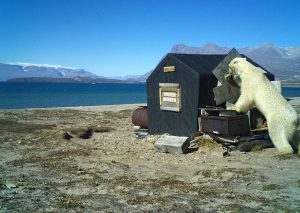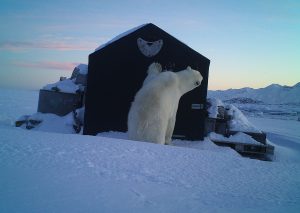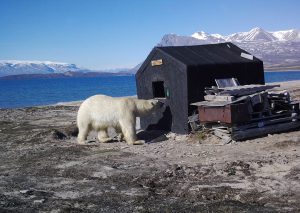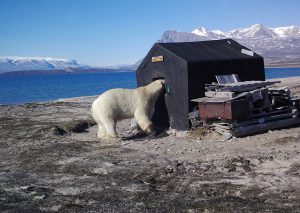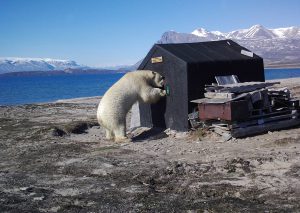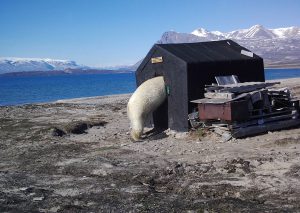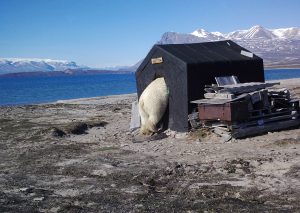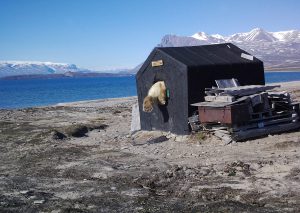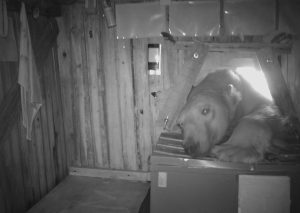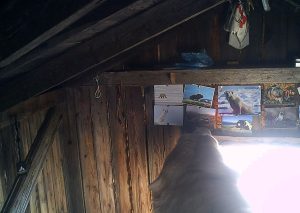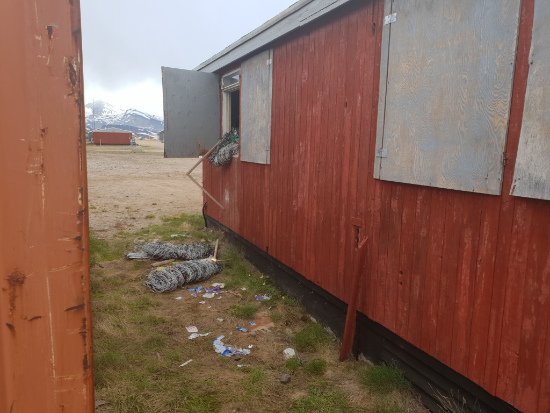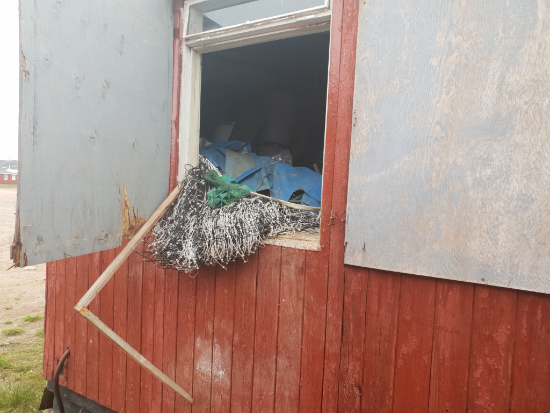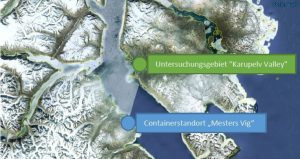2018 Project award Karupelv III.
The photo can hardly convey how impressive it was! An uninvited polar bear visit in and around the research station and material storage in the Karupelv Valley in northeastern Greenland. It’s unimaginable what would have happened if the research team had been inside their hut at that time.
How were such images captured? Our German-French research group spends between four and six weeks each summer in this extraordinary landscape, depending on the weather, and is a guest in the middle of “polar bear territory.” At other times, wildlife cameras are installed in hidden positions outside and inside the research station. They only react to movement and sudden temperature changes. So impressive images were created during the absence of the research group, which we would like to publish.
It is impressive because it is hard to document how urgently researchers need polar bear-proof places to stay and store their specific equipment.
The following images show the inspection of a polar bear at the research station from two sides. It was captured by the wildlife camera installed outside.
However, the snapshot par excellence was taken with the wildlife camera inside! A picture is worth a thousand words.
The next two pictures also show the uninvited and spectacular “break-in” of polar bears into the research group’s material storage.
As these incidents have increased in recent years, the local government was forced to take action. Greenland has been under the responsibility of the Danish Crown since 1933. In their capacity as the highest law enforcement authority, the Danish military is also the dominant force in Greenland’s northeast when it comes to implementing security measures, among other things. In an area where almost all infrastructure is dispensed with on a large scale, the station administration, which also guards or secures part of the equipment storage of the German-French Greenland expedition, is the only inhabited station for researchers.
The equipment is often Spartan and not yet polar bear-proof. The research crew sleeps in tents they bring with them. Then there is the self-built shelter, which serves many functions. During the 4-6 week research period, it often serves as a meeting point, shelter from the weather, post station, shared food station, etc. etc. Before the research crew leaves, the recurring question arises every year whether any leftover food or equipment can be stored there for the next research trip. After all, everything must be brought there manually. Therefore, in coordination with the research team’s steering committee in 2018, we fully paid for a high-quality shipping container. But the donation funds from the PEOPLE for POLARBEARS foundation not only covered the cost of the container itself but also the much larger cost of shipping it from Aarlborg in Denmark by sea to Iceland. The final journey of the container ended with a helicopter transport to the research area.
There are also image documentation about this, which we would like to share with our donors and foundation interested parties.
(Click on the picture to see a brief report on the transport.)
In addition to the protective fence projects of previous years, the investment in the container and financing of the transportation route from Denmark to northeastern Greenland was an extraordinary and exciting project that we accompanied. Ultimately, we once again achieved our foundation goals:
• We invested in the polar bear habitat.
• Our investment benefits the safety of polar bears and humans on-site.
• We supported a sustainable measure so that the valuable and scientific work on climate change, animal behavior, and breeding issues in the Arctic can be researched there.
Executive Board, Bad Homburg v. d. Höhe, November 2018
Foundation of PEOPLE FOR POLARBEARS
Volker Henrich
Sören Zickermann


